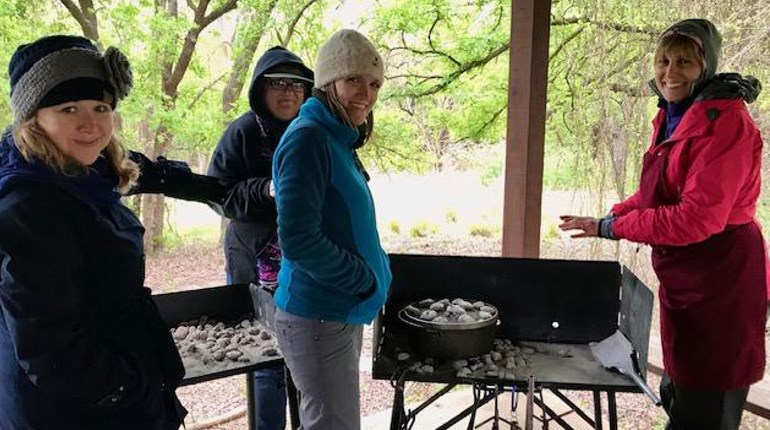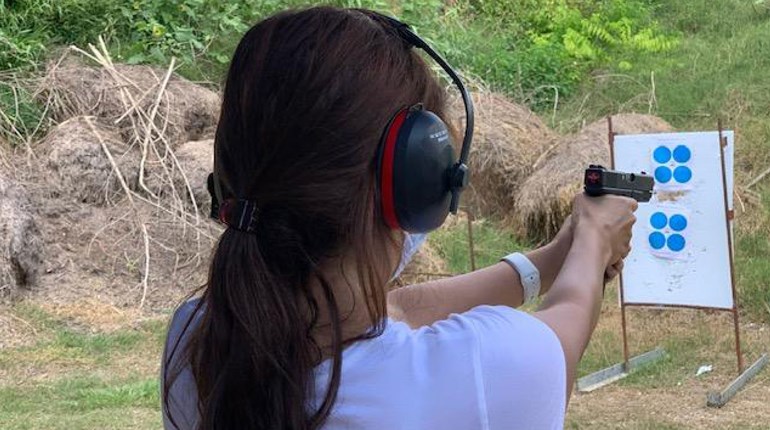
Teaching is a skill. Not everyone is a teacher, that is why we, as a society, have so much respect and admiration for those we trust our children with eight or more hours a day in the classroom. Firearms instructors are no different. Just like in any profession, there are good teachers and there are bad ones.
A new shooter’s first trip to the range can make or break them, depending on the individual who brought them. I have encountered many beginner shooters who were reluctant to go to the range a second time because of their first experience. Unfortunately, I think we have lost many individuals that otherwise would be part of the shooting community because of bad instructors. When we lose a new shooter, we not only lose an addition to our community, but also a pro-Second Amendment supporter and a potential NRA member!
When someone takes a new shooter to the range, he or she must know how to properly do so. There are five things you must understand to properly take a beginner shooting. You must know: how to instruct; how to choose a range; how to dress; what firearm to use; and you must know the beginner range techniques.
1. Know How to Instruct
Anytime you take a new shooter to the range, it’s imperative to remember that they are not as experienced as you are. Also, when you are instructing a beginner, do not act as if it is a competition. You need to teach to the student, not teach to your ego. In other words, do not over-instruct. This is not the time to impress your new shooter at the range with the “3 T’s:” your training, technical, or tactical skills.
Let your student guide the lesson. Even though your new shooter may want to get to the actual shooting lesson right away, keep in mind he or she may not be ready. Take some time and let them get used to holding the unloaded firearm. If there is a safety, let them get comfortable engaging and disengaging it. When a new shooter is handling an unloaded firearm with a safety, I instruct them to pick up the unloaded gun, keep it pointed in a safe direction, and disengage the safety, then engage the safety and set it down. I have them repeat this over and over until the student is comfortable and the movements are smooth.
The key to teaching a new student is to start with an unloaded gun right from the beginning of the lesson. Teach one thing at a time and build on the foundation of this newly learned skill. Start by uncasing the unloaded firearm, and while keeping it pointed in a safe direction, inserting a magazine, then charging the pistol. Next, train your new shooter the fundamentals of shooting: aiming, breath control, hold control, trigger control and how to properly follow through with every shot. This could take up to an hour or longer before you even introduce live ammunition into the training.
Instructors should never shoot in front of their students when teaching an introductory or basic firearms course. There are several reasons for this. First, if you are having a really good day and shooting well, you could set the bar too high for a beginner and they may become discouraged. Second, if you are having a really bad day, your student might quietly question if you know what you are doing since you cannot even hit your target. It is OK to demonstrate how to shoot but do so with an unloaded firearm and dry fire. Most new shooters want to either save their target or take pictures of their successful day at the range.
2. Know How to Choose a Range
Choosing a gun range to instruct a new shooter is very important. Unfortunately, many instructors pick a range that is convenient for them. Determining which range to use for instruction needs to be approached the same way a good schoolteacher regards his or her classroom. The range you choose to instruct at needs to be conducive to learning.
Instructors first need to determine where the learning will take place, such as an indoor range or an outdoor range. Take into consideration things such as good lighting, comfortable temperatures, weather, wind, external distractions and the presence of other shooters on the line. Your student cannot learn if he or she is not comfortable. There are some factors you can control and others that you cannot. To keep distractions to a minimum, make sure you pick a time that is not crowded. Once again, do not pick a time that is convenient for you, but a time convenient for your student. This can help you control distractions such as crowded conditions, noise level, and other factors that can affect learning.
3. Know How to Dress
Make sure your students know how to dress. Your students need to dress comfortably, yet functional. You need to make sure that your student is protected from flying hot brass that is ejected from the firearm. Communicate with your new shooter ahead of time. They need to wear hearing and eye protection, closed toe shoes, a shirt with a high neck or collar, and a billed cap. If an ejected round of hot brass finds its way down the shirt of your student, not only does the learning process stop, but it creates a possible dangerous situation as the individual does the “hot brass dance” and fails to keep their muzzle pointed in a safe direction.
Adequate hearing and eye protection is part of dressing properly. Have your students put their hearing protection on in the parking lot before approaching the check-in area at the range. Individuals who have not frequented gun ranges are very sensitive to the noise a firearm makes and oftentimes “jumps” or flinches at the sounds. When this happens, you now have a jumpy student that has a racing heart.
4. Know What Firearm to Use
A common mistake many instructors make is training with a caliber for which their student is not ready. For example, a 9 mm is a common cartridge that is often the preferred firearm of choice by many instructors. Although a 9 mm has minimum recoil, your student may not be ready for it. Start small. An instructor that starts their student on a small caliber such as a .22 caliber gun is much more effective than an instructor that starts their student on a larger caliber. By using a small caliber, a student can concentrate on the fundamentals until they are understood. Once the new shooter is comfortable with the firearm and learns the fundamentals, a larger caliber firearm can be introduced.
The instructor should also be using a firearm that is the appropriate size and weight. Many new shooters purchase a firearm, then look for an instructor. Many times, the new shooter buys a firearm that the clerk from the store recommends, and they end up with a firearm that does not fit them. A good instructor will have several different sizes of firearms that his or her student can try out.
5. Know the Beginner Range Techniques
Remember to make the trip fun! This is not the time to show off your own skills. Also, do not expect them to shoot as well as you. Once again, do not forget this is their time and the instructor needs to make sure their student gets their money’s worth. The instructor and student must have the same attitude—working toward the same goal of confidence and skill building. The key to instruction is success!
Start small, close and large! Introduce a new shooter to a small caliber firearm with a small frame and grip, and medium weight. Just remember that the lighter a firearm is, the more felt recoil it will have. This means that you must find that “happy medium” between a firearm that is too big and heavy, and a firearm that is too small and light.
When it comes to distance, think close. The NRA Basic Pistol Course recommends starting the student 10 feet, or approximately 3 yards, away from the target. If you start at a greater distance, you run the risk of student frustration and disappointment. As your student improves their confidence and shooting fundamentals, you can then work on increasing their distance away from the target.
The targets you use for a new shooter must be large. You want your student to be successful and hit the target! Ideally, hang a large blank piece of paper at the target, and draw a big dot in the center as a reference/aiming point. Targets with rings and numerical point values can be intimidating for a new shooter and cause a distraction.
Good instructors create good students. Learn the proper way of instruction and your students will leave with the skills they need to improve their marksmanship. Setting your students up for success will ultimately improve your business and through positive word-of-mouth, your reputation of as a firearms instructor could be your best advertisement!














































